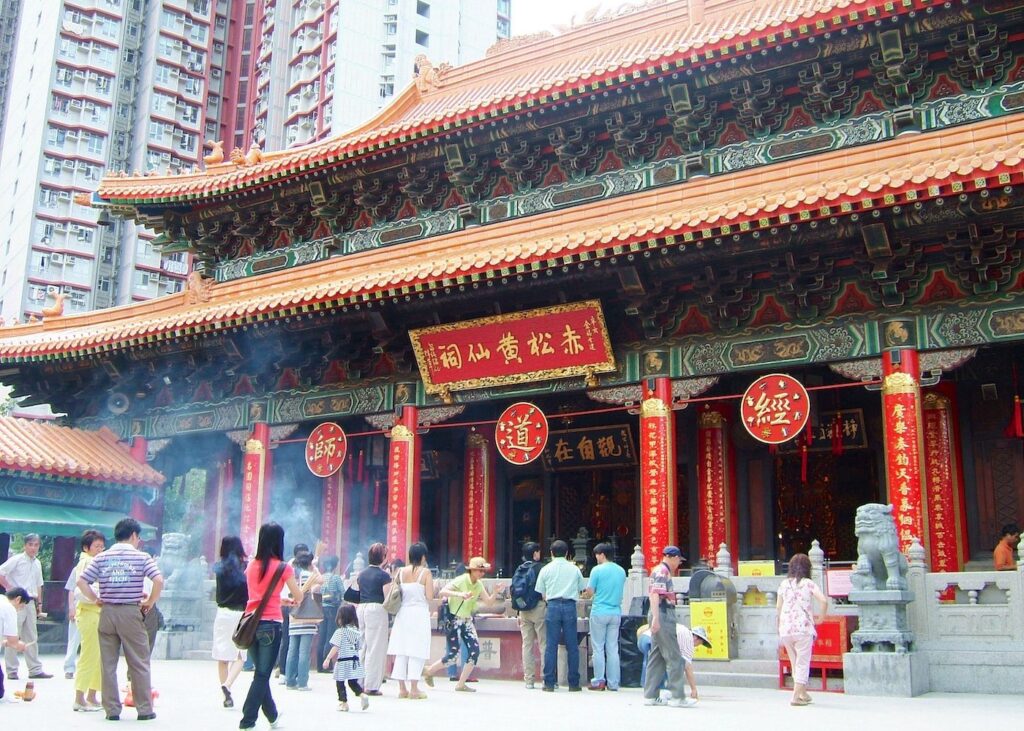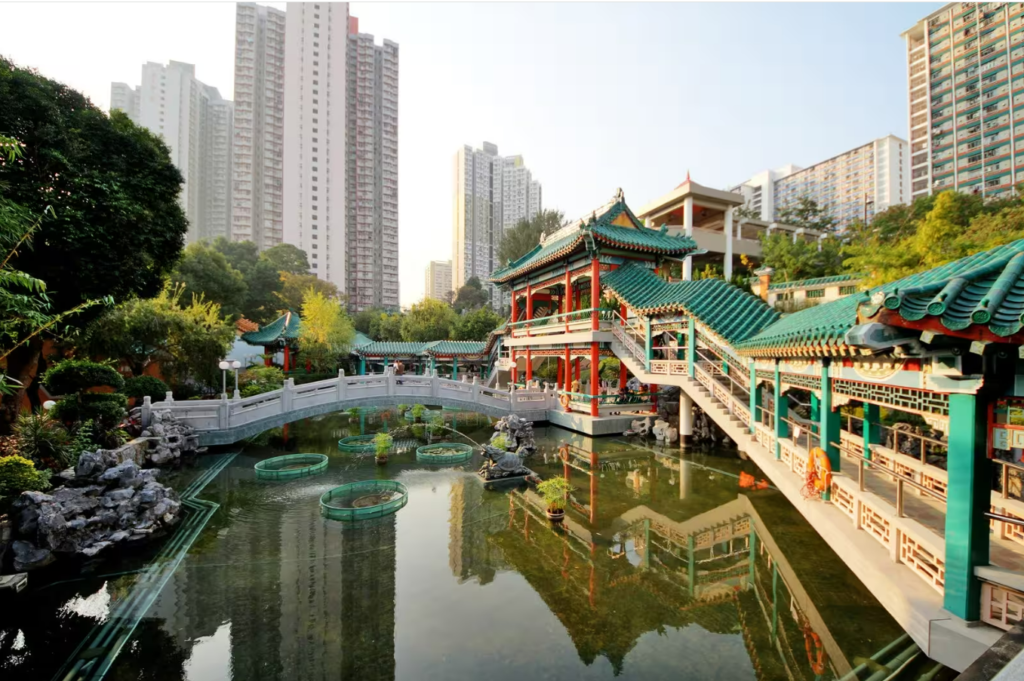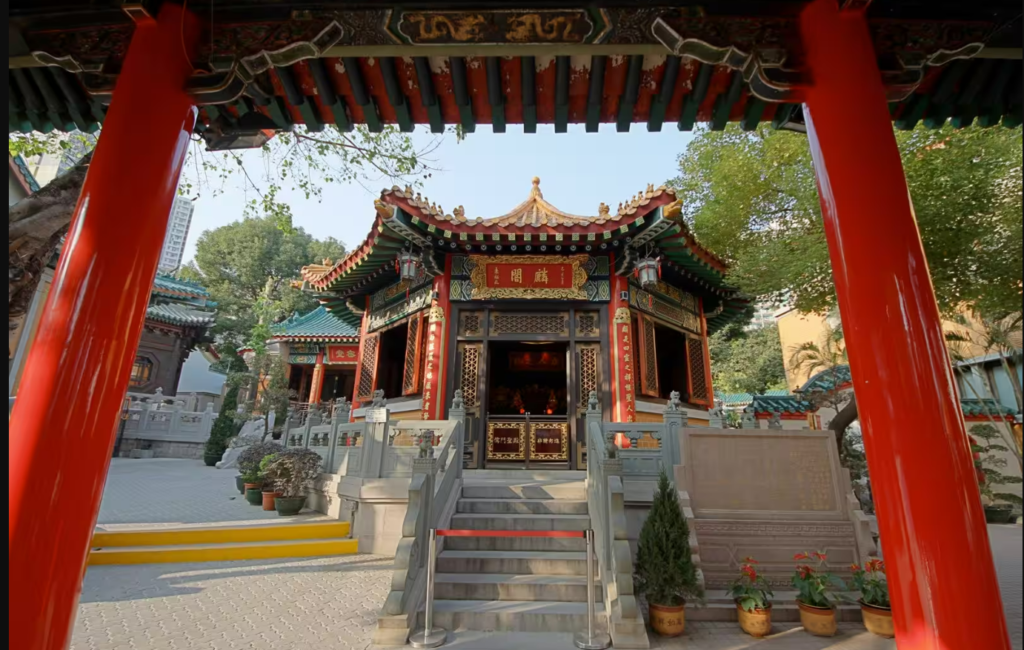Wong Tai Sin Temple, also known as Sik Sik Yuen Wong Tai Sin, has earned a reputation for “answering every prayer.” It’s among the most well-known and beloved temples in Hong Kong, and visiting Wong Tai Sin temple is definitely one of the best things to do in Kowloon.

History of Wong Tai Sin Temple
Wong Tai Sin, originally called Wong Cho Ping, was born around 328 AD and practiced Taoism for 40 years. Legend says he became a wise and holy person, known as “Tsik Chung Wong Tai Sin.” In 1915, a Taoist priest brought his sacred portrait from Guangdong to Hong Kong. This led to the founding of Sik Sik Yuen and Wong Tai Sin Temple in 1921. The temple has been open to the public since 1956.
People believe Wong Tai Sin Temple can grant any wish. It’s always busy, especially on Lunar New Year’s Day. Many visit before midnight on New Year’s Eve to make the first incense offering for good luck in the coming year.
In 1969, they unveiled the “Tiandi Zhongling” Arch, and the area became known as Wong Tai Sin District. Since 1997, the temple has hosted Taoist weddings recognized by the government.
The temple was designated a Grade 1 historic building in 2010. In 2014, Wong Tai Sin Belief and Customs in Hong Kong was named a national intangible cultural heritage.


Main Structure of Wong Tai Sin Temple
Wong Tai Sin Temple covers a huge area of over 18,000 square meters. It’s arranged according to a plan made in 1937, based on the idea of “Five Elements.” This means different parts of the temple represent metal, wood, water, fire, and earth.
The temple is built in a traditional Chinese style. It has big, fancy red pillars and a stunning gold roof. The roof is adorned with blue patterns, colorful carvings, and pretty yellow decorations.
The Main Hall
The main hall of Wong Tai Sin Temple has a classic Chinese temple design, with a golden roof, red pillars, and a blue lintel. In the center of the main altar, you’ll find a portrait of Wong Tai Sin. Behind the altar, there’s a wooden carving that tells his story. Other deities, like the Great Sage Equaling Heaven and the Town God, are also worshipped in the hall. Inside, you’ll see wooden scriptures and pictures related to Confucianism, Buddhism, and Taoism on the walls.
Three Sages Hall
The hall of Wong Tai Sin Temple is unique because it not only enshrines figures from Taoism like Lu Dongbin, one of the Eight Immortals, but also includes figures from Buddhism like Avalokitesvara, and Guan Yu, a famous general from ancient China known for his loyalty. This blend of different religious figures is a distinctive feature of Wong Tai Sin Temple.
Nine Dragons Screen
The Nine Dragons Screen in Wong Tai Sin, Hong Kong, was built in 1981, modeled after the original one in Beihai Park, Beijing. On the back of the wall, there’s its name in Chinese and a poem written by Mr. Zhao Puchu, the former Chairman of the Chinese Buddhism Association. Following traditional Chinese symbolism, the building located on the right side of the temple, called “Phoenix Tweeting,” complements this wall adorned with dragons.
Congxin Garden
Congxin, which translates to “do as one pleases” in English, was constructed in 1991 to commemorate the 70th anniversary of the Wong Tai Sin temple. Its name is inspired by a famous saying of Confucius – “Do as one pleases at his/her seventies”. The garden features a small bridge, waterside pavilion, mini waterfall, artificial lake, and pavilion in various styles. Additionally, there’s a long corridor modeled after the one in the imperial Summer Palace.
Location: 2 Chuk Yuen Village, Wong Tai Sin, Kowloon, Hong Kong
Opening Time: Daily from 7am to 5pm
Leave a Reply